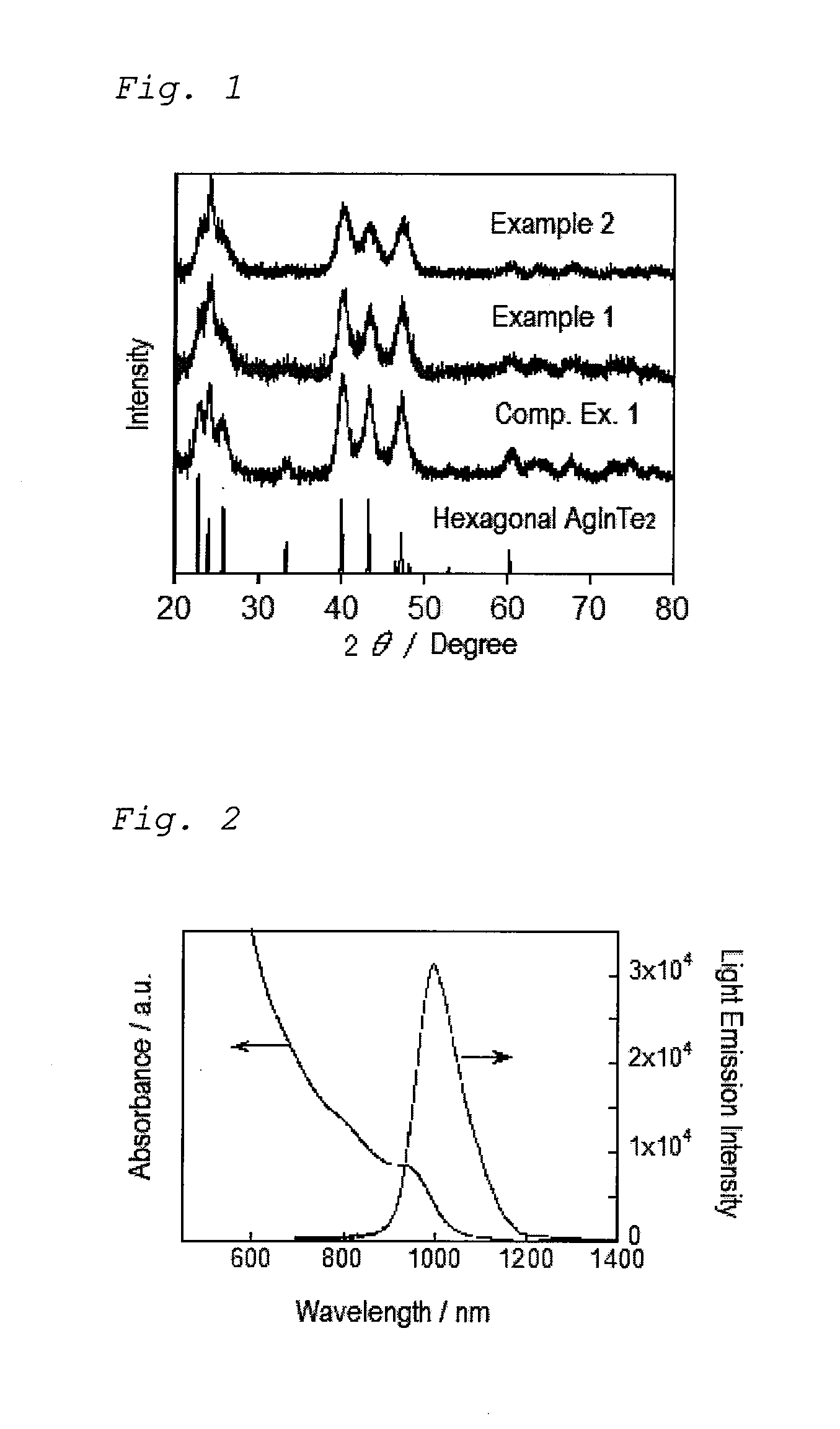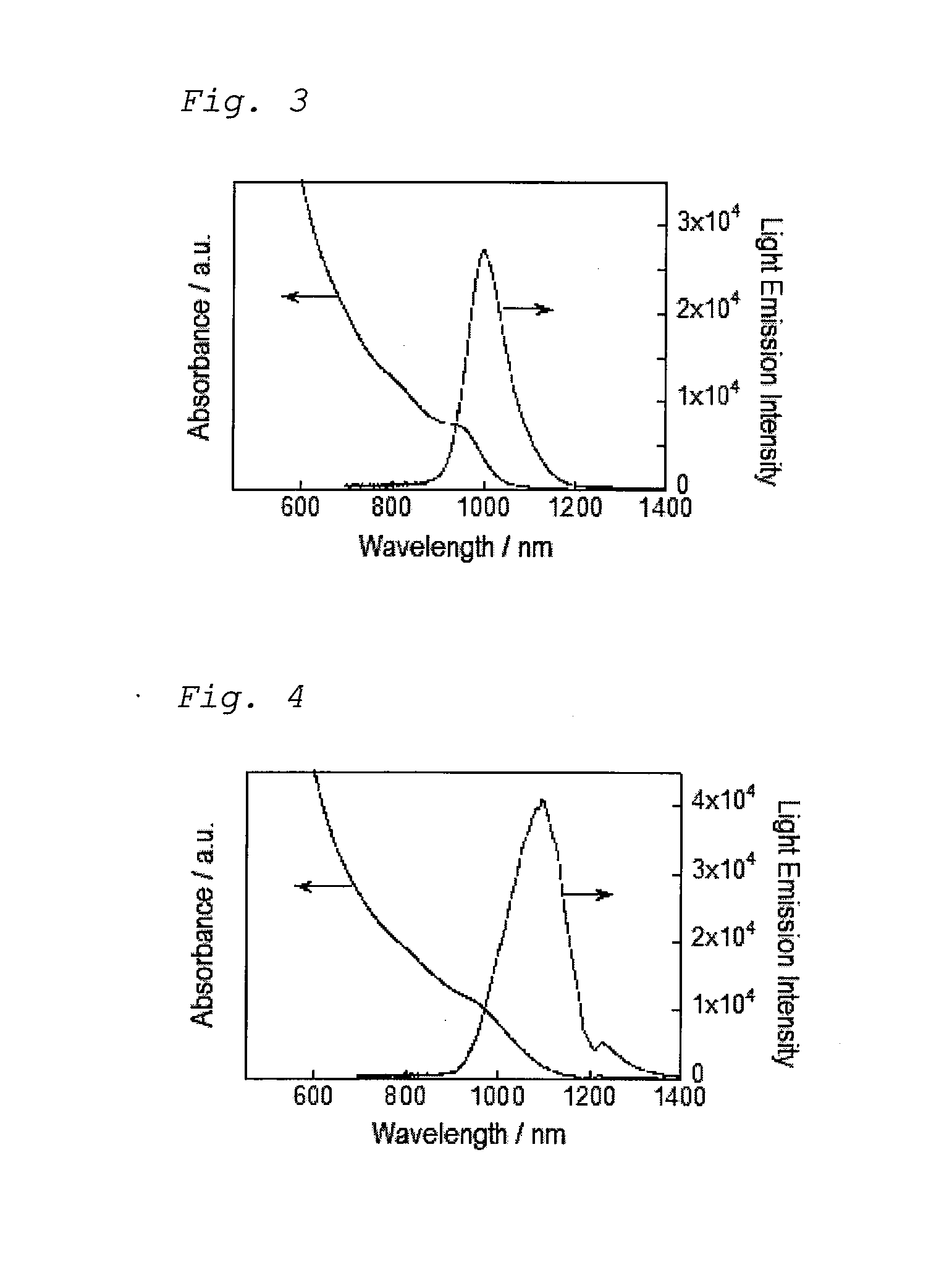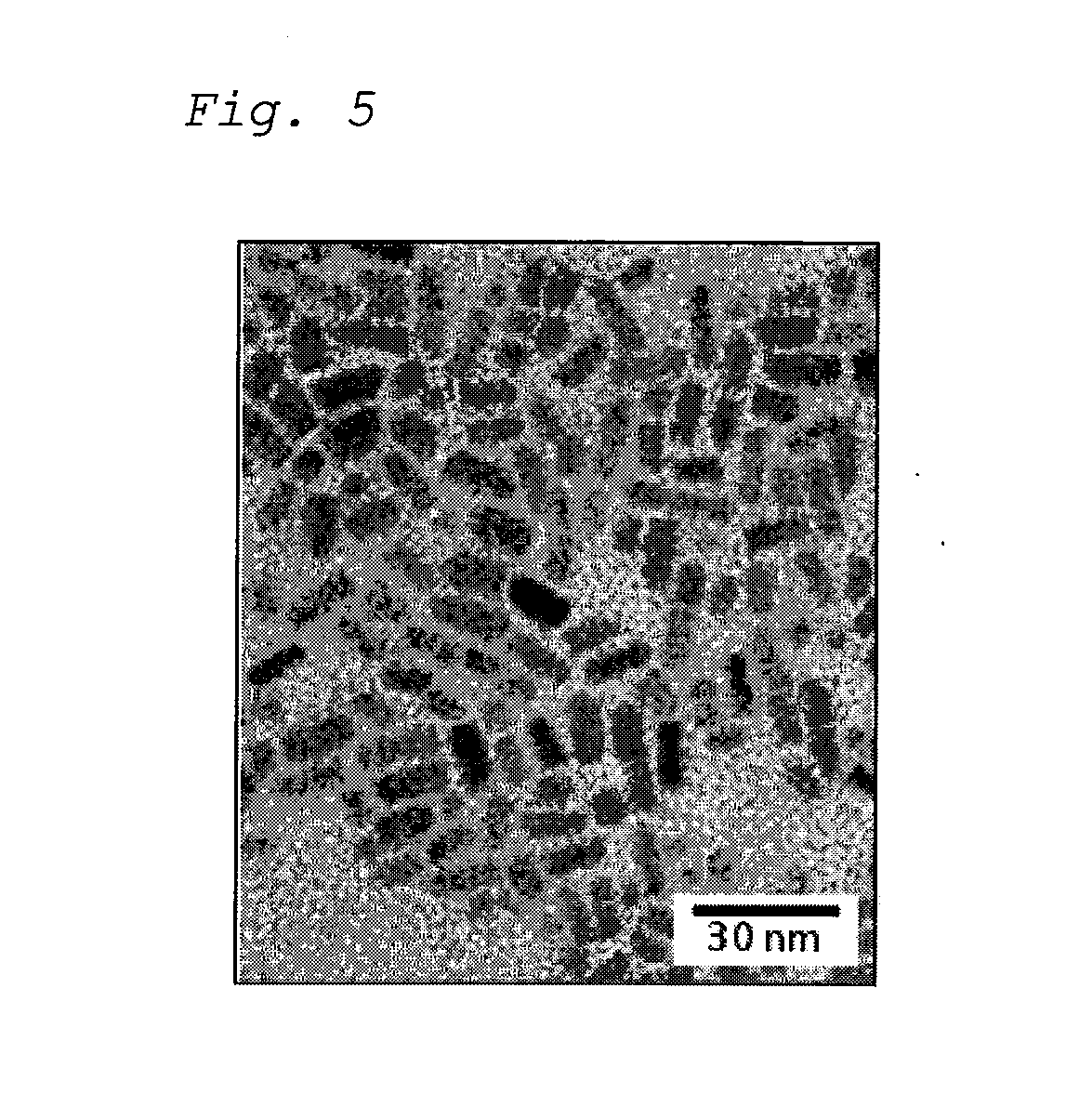Tellurium compound nanoparticles, composite nanoparticles, and production methods therefor
a technology of composite nanoparticles and ternary quantum dots, which is applied in the direction of selenium/tellurium compunds, luminescent compositions, chemistry apparatus and processes, etc., can solve the problem that the conventional ternary quantum dots cannot be obtained, and achieve the effect of less toxic composition
- Summary
- Abstract
- Description
- Claims
- Application Information
AI Technical Summary
Benefits of technology
Problems solved by technology
Method used
Image
Examples
example 1
(1) Synthesis of Te Precursor
[0078]First, 10.7 mmol of Te powder was put in a flask, the inside of which was set under the nitrogen atmosphere. Subsequently, 30 cm3 of n-tri-octylphosphine stored in a nitrogen atmosphere was added to the Te powder. The inside of the flask was decompressed one time, and then the mixture was heated with a mantle heater while being stirred.
[0079]When the temperature of the mixture reached 80° C., nitrogen gas was recharged into the flask, and the mixed liquid was then heated to 220° C. at a rate of temperature increase of 100° C. / hr. When three hours had passed since the start of heating, the solution became an orange-Colored transmissive solution. Thereafter, the solution was allowed to cool to the room temperature, whereby the color of the solution was changed to yellow. The precursor solution thus obtained was stored under the nitrogen atmosphere until it was used for experiments.
(2) Synthesis of Tellurium Compound (AgInTe2) Nanoparticles
[0080]First...
example 2
[0082]A solution containing AgInTe2 nanoparticles in this example was obtained in the same way as Example 1 except that the amount of each of silver acetate and indium acetate was 0.25 mmol, the amount of the Te precursor solution was 1.4 cm3, and the amount of 1-dodecanethiol was 2.0 cm3.
[0083]In this example, both a molar ratio of silver acetate to 1-dodecanethiol, and a molar ratio of indium acetate to 1-dodecanethiol were 3.0×10−2.
PUM
| Property | Measurement | Unit |
|---|---|---|
| length | aaaaa | aaaaa |
| full width at half maximum | aaaaa | aaaaa |
| peak wavelength | aaaaa | aaaaa |
Abstract
Description
Claims
Application Information
 Login to View More
Login to View More - R&D
- Intellectual Property
- Life Sciences
- Materials
- Tech Scout
- Unparalleled Data Quality
- Higher Quality Content
- 60% Fewer Hallucinations
Browse by: Latest US Patents, China's latest patents, Technical Efficacy Thesaurus, Application Domain, Technology Topic, Popular Technical Reports.
© 2025 PatSnap. All rights reserved.Legal|Privacy policy|Modern Slavery Act Transparency Statement|Sitemap|About US| Contact US: help@patsnap.com



